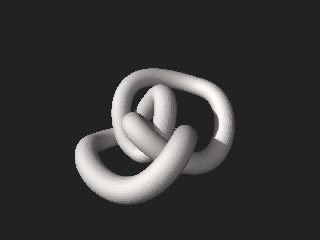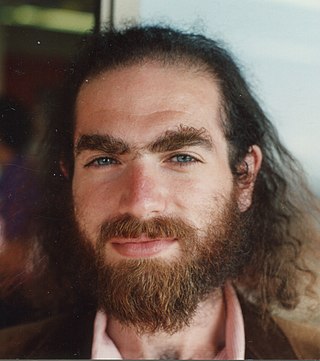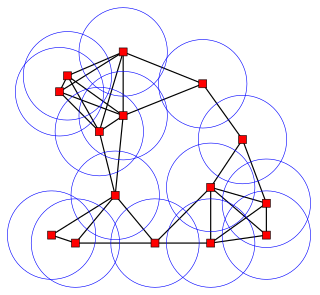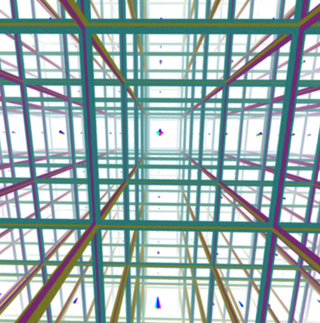Related Research Articles

In mathematics, a conjecture is a conclusion or a proposition that is proffered on a tentative basis without proof. Some conjectures, such as the Riemann hypothesis or Fermat's conjecture, have shaped much of mathematical history as new areas of mathematics are developed in order to prove them.

In mathematics, differential topology is the field dealing with the topological properties and smooth properties of smooth manifolds. In this sense differential topology is distinct from the closely related field of differential geometry, which concerns the geometric properties of smooth manifolds, including notions of size, distance, and rigid shape. By comparison differential topology is concerned with coarser properties, such as the number of holes in a manifold, its homotopy type, or the structure of its diffeomorphism group. Because many of these coarser properties may be captured algebraically, differential topology has strong links to algebraic topology.
In the mathematical field of geometric topology, the Poincaré conjecture is a theorem about the characterization of the 3-sphere, which is the hypersphere that bounds the unit ball in four-dimensional space.

Topology is the branch of mathematics concerned with the properties of a geometric object that are preserved under continuous deformations, such as stretching, twisting, crumpling, and bending; that is, without closing holes, opening holes, tearing, gluing, or passing through itself.

Algebraic topology is a branch of mathematics that uses tools from abstract algebra to study topological spaces. The basic goal is to find algebraic invariants that classify topological spaces up to homeomorphism, though usually most classify up to homotopy equivalence.
In mathematics, Thurston's geometrization conjecture states that each of certain three-dimensional topological spaces has a unique geometric structure that can be associated with it. It is an analogue of the uniformization theorem for two-dimensional surfaces, which states that every simply connected Riemann surface can be given one of three geometries.

Grigori Yakovlevich Perelman is a Russian mathematician and geometer who is known for his contributions to the fields of geometric analysis, Riemannian geometry, and geometric topology. In 2005, Perelman resigned from his research post in Steklov Institute of Mathematics and in 2006 stated that he had quit professional mathematics, owing to feeling disappointed over the ethical standards in the field. He lives in seclusion in Saint Petersburg and has declined requests for interviews since 2006.

Discrete geometry and combinatorial geometry are branches of geometry that study combinatorial properties and constructive methods of discrete geometric objects. Most questions in discrete geometry involve finite or discrete sets of basic geometric objects, such as points, lines, planes, circles, spheres, polygons, and so forth. The subject focuses on the combinatorial properties of these objects, such as how they intersect one another, or how they may be arranged to cover a larger object.

In mathematics, geometric topology is the study of manifolds and maps between them, particularly embeddings of one manifold into another.

In mathematics, a 3-manifold is a topological space that locally looks like a three-dimensional Euclidean space. A 3-manifold can be thought of as a possible shape of the universe. Just as a sphere looks like a plane to a small and close enough observer, all 3-manifolds look like our universe does to a small enough observer. This is made more precise in the definition below.
In mathematics, more precisely in topology and differential geometry, a hyperbolic 3-manifold is a manifold of dimension 3 equipped with a hyperbolic metric, that is a Riemannian metric which has all its sectional curvatures equal to −1. It is generally required that this metric be also complete: in this case the manifold can be realised as a quotient of the 3-dimensional hyperbolic space by a discrete group of isometries.
In mathematics, Floer homology is a tool for studying symplectic geometry and low-dimensional topology. Floer homology is a novel invariant that arises as an infinite-dimensional analogue of finite-dimensional Morse homology. Andreas Floer introduced the first version of Floer homology, now called symplectic Floer homology, in his proof of the Arnold conjecture in symplectic geometry. Floer also developed a closely related theory for Lagrangian submanifolds of a symplectic manifold. A third construction, also due to Floer, associates homology groups to closed three-dimensional manifolds using the Yang–Mills functional. These constructions and their descendants play a fundamental role in current investigations into the topology of symplectic and contact manifolds as well as (smooth) three- and four-dimensional manifolds.
John Willard Morgan is an American mathematician known for his contributions to topology and geometry. He is a Professor Emeritus at Columbia University and a member of the Simons Center for Geometry and Physics at Stony Brook University.
In the mathematical area of topology, the generalized Poincaré conjecture is a statement that a manifold which is a homotopy sphere is a sphere. More precisely, one fixes a category of manifolds: topological (Top), piecewise linear (PL), or differentiable (Diff). Then the statement is
In mathematics, specifically geometry and topology, the classification of manifolds is a basic question, about which much is known, and many open questions remain.

John Robert Stallings Jr. was a mathematician known for his seminal contributions to geometric group theory and 3-manifold topology. Stallings was a Professor Emeritus in the Department of Mathematics at the University of California at Berkeley where he had been a faculty member since 1967. He published over 50 papers, predominantly in the areas of geometric group theory and the topology of 3-manifolds. Stallings' most important contributions include a proof, in a 1960 paper, of the Poincaré Conjecture in dimensions greater than six and a proof, in a 1971 paper, of the Stallings theorem about ends of groups.
This is a timeline of manifolds, one of the major geometric concepts of mathematics. For further background see history of manifolds and varieties.
Martin George Scharlemann is an American topologist who is a professor at the University of California, Santa Barbara. He obtained his Ph.D. from the University of California, Berkeley under the guidance of Robion Kirby in 1974.
References
- ↑ "Board of Directors". Mathematical Sciences Publishers. Retrieved 8 October 2015.
- ↑ Rourke, C.P.; Sanderson, B.J. "Block Bundles I, II and III". Annals of Mathematics. 87 (1968): 1–28, 255–277, 431–483. doi:10.2307/1970591.
- ↑ Rourke, C.P.; Sanderson, B.J. "An embedding without a normal microbundle". Invent Math. 3 (1967): 293–299.
- ↑ "ICM Plenary and Invited Speakers since 1897". International Mathematical Union. Archived from the original on 24 November 2017. Retrieved 11 October 2015.
- ↑ Rourke, C. P. (1971). "Block structures in geometric and algebraic topology". Actes du Congrès International des Mathématiciens (Nice, 1970). Vol. Tome 2. Paris: Gauthier-Villars. pp. 127–32.
- ↑ Gleick, James (30 September 1986). "One of Math's Major Problems Reported Solved". The New York Times .
- ↑ Szpiro, George G. (2007). Poincaré's Prize . Dutton. pp. 177–79. ISBN 978-0-525-95024-0.
- ↑ O'Shea, Donal (2007). The Poincaré Conjecture. Walker Books. pp. 179–80. ISBN 978-0-8027-1532-6.
- ↑ Rêgo, Eduardo; Rourke, Colin (1988). "Heegaard diagrams and homotopy 3-spheres". Topology. 27 (2): 137–43. doi:10.1016/0040-9383(88)90033-x.
- ↑ The proof later of the Poincaré Conjecture simplified this to "always yes".
- ↑ Rourke, Colin (1997). "Algorithms to disprove the Poincaré conjecture". Turkish Journal of Mathematics. 21 (1): 99–110.
- ↑ Dunwoody, M. J. "A Proof of the Poincaré Conjecture ?" (PDF). Retrieved 9 October 2015.
- ↑ "Math whiz tackles old problem with new twist". Sarasota Herald-Tribune. 26 April 2002. p. 6A.
- ↑ Szpiro, George G. (2007). Poincaré's Prize . Dutton. pp. 181–82. ISBN 978-0-525-95024-0.
- ↑ O'Shea, Donal (2007). The Poincaré Conjecture. Walker Books. p. 187. ISBN 978-0-8027-1532-6.